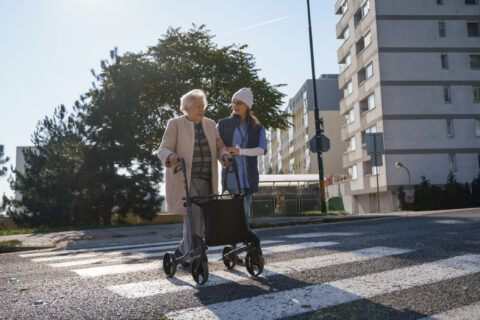As downtowns progress, they are welcoming residents to shop, explore and enjoy their surroundings as city centers become destinations for daylong enjoyment. During the National League of Cities Centennial City Summit, local leaders from across the country gathered to share their views on downtown revitalization by addressing challenges and encouraging sustainable growth during the session The New Downtown: Dynamic, Inclusive and Creative.
The discussion, moderated by Mayor Corey Woods of Tempe, Arizona, featured a panel of economic development thought leaders, including Overland Park Council President Logan Heley (Kansas), and Economic Recovery Corps (ERC) Fellows Servola Frazier (Fort Lauderdale, Florida) and Tiolora Lumbantoruan (Fair Lawn, New Jersey).
The key takeaway for attendees was that the future of downtowns depends on new investments, community collaboration and forward-looking strategies.
Tempe, Arizona: Honoring the Past While Looking Toward the Future
Historic Mill Avenue in Tempe was once Arizona’s premier downtown nightlife destination. Mayor Woods emphasized that revitalization requires more than just infrastructure updates to keep the area attractive to both residents and tourists. With the Refresh Tempe initiative, the city is investing millions into embracing the history of Mill Avenue by replicating existing brickwork to enhance the community’s charm. The initiative also embraces modernization through public art installations and outreach to diverse food, beverage and retail vendors to meet the needs of their changing demographics.
The challenge is balancing the needs of current residents with the demands of the future. By focusing on data-driven choices and a willingness to take risks, Tempe is showcasing itself as a multifaceted downtown that appeals to both the local community and visitors.
Fort Lauderdale, Florida: Reclaiming Identity in a Historic Corridor
In Fort Lauderdale, Servola Frazier is working to restore the legacy of the city’s historic African-American corridor, an area that has struggled with blight. The city’s approach focuses on responsible revitalization by having community members involved in the planning process. “Hard conversations show care,” Frazier explained, emphasizing the importance of gaining trust and ownership within the community.
This collaborative model extends to Fort Lauderdale’s participation in the Economic Recovery Corps (ERC), a program funded by the U.S. Economic Development Administration designed to accelerate recovery from the COVID-19 pandemic in underserved communities. By participating in the program, host sites are matched with professionals like Frazier to build the capacity needed to advance economic development and transformative change.
Frazier believes that successful revitalization requires both physical improvements and meaningful opportunities for residents, which can only be achieved by including community members in the planning process. Fort Lauderdale plans to use this corridor as a model for creating more entrepreneurship opportunities throughout the city, applying successful strategies and best practices to other neighborhoods.
Overland Park, Kansas: Continuous Improvement of America’s Best Farmers Market
Logan Heley highlighted how collaboration has been key to gaining buy-in for their downtown revitalization project. The city created a business improvement district by working closely with merchants to build on the competitive advantage of their award-winning farmers’ market to attract more private investments.
Heley spoke on the importance of having a plan that inspires confidence in both the public and private sectors. For Overland Park, this has meant making their downtown more pedestrian-friendly, composting, installing solar panels and establishing year-round use of public spaces.
In Overland Park, measuring success in this project goes beyond traditional metrics. “It’s hard to quantify happiness,” said Heley. While metrics like tax revenue and foot traffic are important, the goal is creating a space where residents enjoy spending their time.
Fair Lawn, New Jersey: Continuous Improvement of America’s Best Farmers Market
Tiolora Lumbantoruan from Fair Lawn, New Jersey, discussed navigating the differences between economic development and urban planning in a town with multiple districts but no central downtown. Fair Lawn is utilizing community engagement activities like mural projects and streetscape plans to create a sense of belonging. “Volunteers are great, but we need to gather new points of view from young families, cyclists and others,” she said, highlighting the need for creating an inclusive environment in planning.
The Future of Downtowns
The speakers admitted that revitalization is rarely done with ease. Addressing pushback, funding constraints and working with legacy businesses are all a part of the process. To navigate these challenges, Overland Park used American Rescue Plan Act (ARPA) funds to support small business grants and Fair Lawn used state funding to finance façade improvements to bring in new customers.
In the end, the success of these projects relies on both vision and action. As communities embrace these investments, collaborative planning, and sustainable practices, the downtowns of the future promise to be hubs of culture, business and community. Whether it’s restoring historic corridors, creating pedestrian-friendly spaces or building grassroots relationships, downtowns are being reimagined as a place where everyone belongs.
NLC’s City Summit
View photos from 2024’s Centennial City Summit in Tampa Bay, Florida, and save the date for City Summit 2025 in Salt Lake City, Utah!








